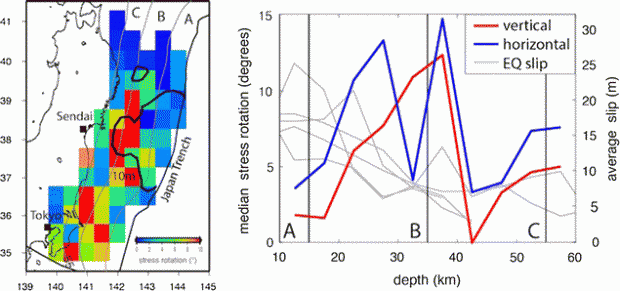- Recommended articles
- June 26, 2017

Hardebeck (2017) explores the spatial distribution of stress rotations caused by great subduction zone earthquakes. These stress rotations imply that the earthquake stress drops are of similar magnitude to the background stress, consistent with low differential stress levels in subduction zones. The largest stress rotations are consistently found just above the Moho depth of the overriding plate, a depth range where large coherent slip patches are observed in great earthquakes, and where high fluid pressures have been imaged. Both of these processes could contribute to the low background stress levels.
Click to view the article (Hardebeck, 2017)
This article was a contribution to the special issue of "Crustal Dynamics: Unified Understanding of Geodynamics Processes at Different Time and Length Scales".


![[Frontier Letter] Recent advances in earthquake seismology using machine learning](https://www.earth-planets-space.org/wp-content/uploads/2024/06/40623_2024_1982_Figa_HTML-80x33.png)
![[Frontier Letter] The theoretical basis for textural indices of eruption dynamics: review and new conceptual models](https://www.earth-planets-space.org/wp-content/uploads/2024/06/40623_2025_2146_Figa_HTML-66x40.png)

